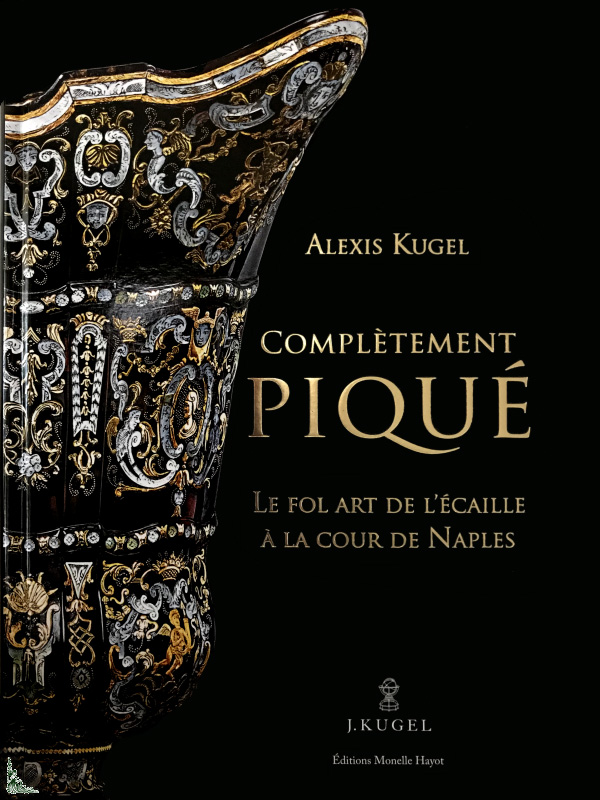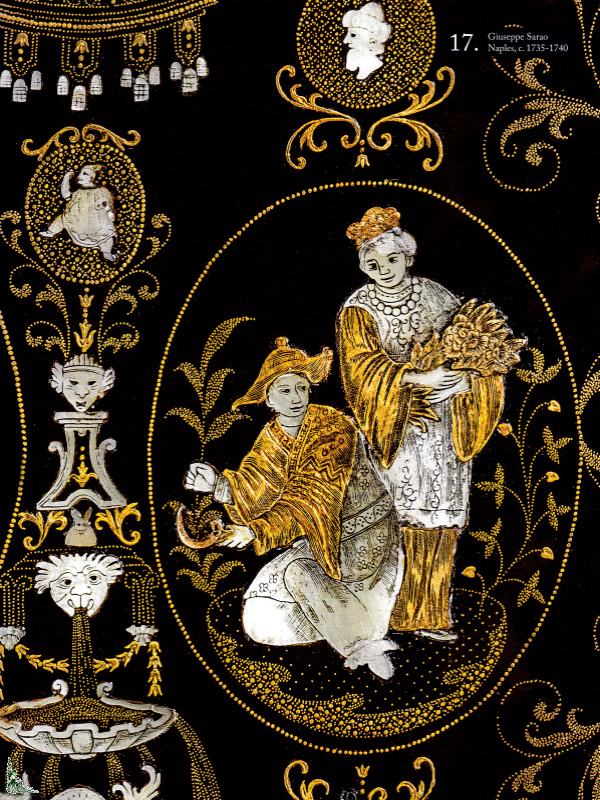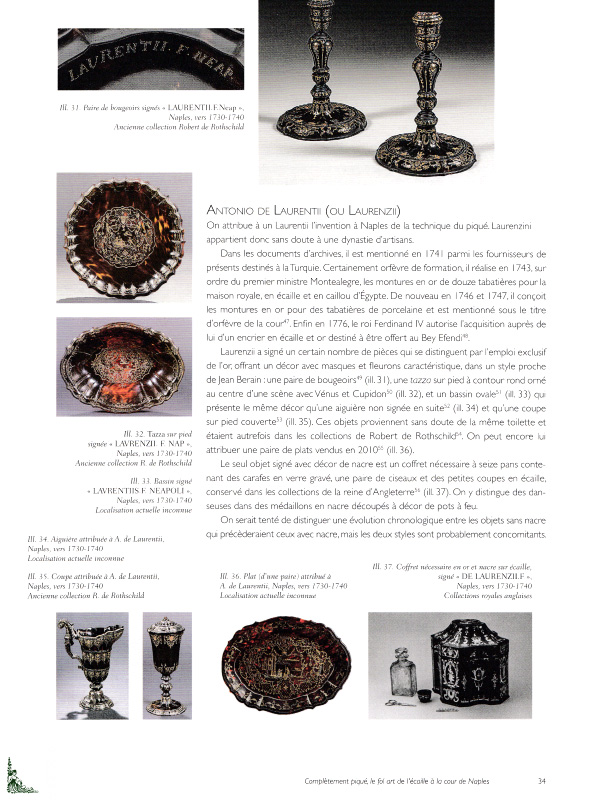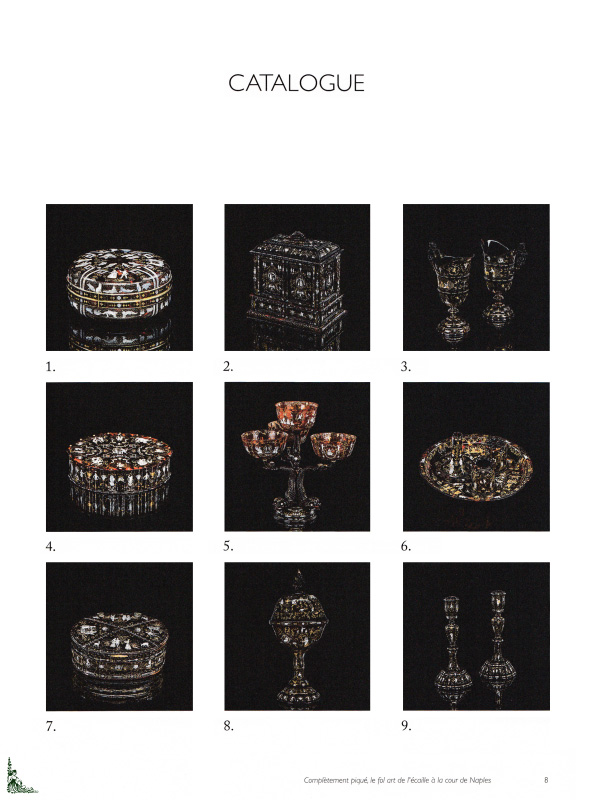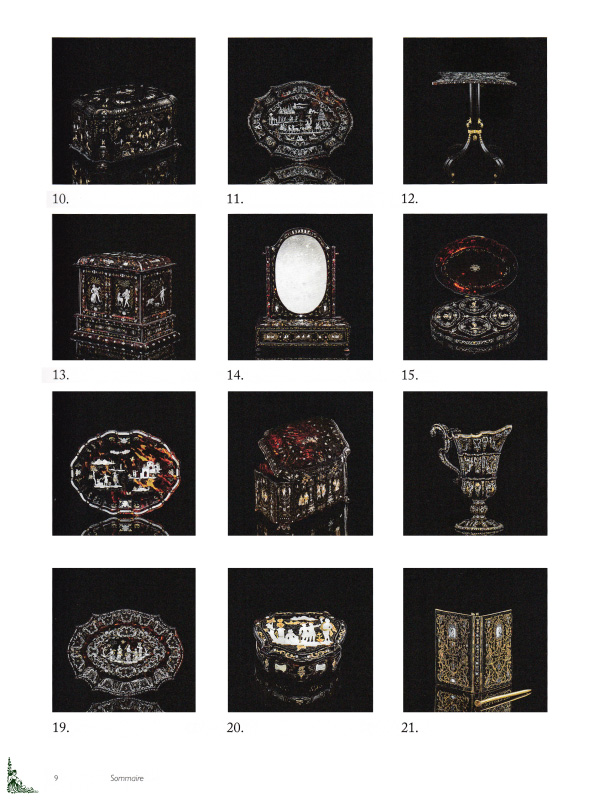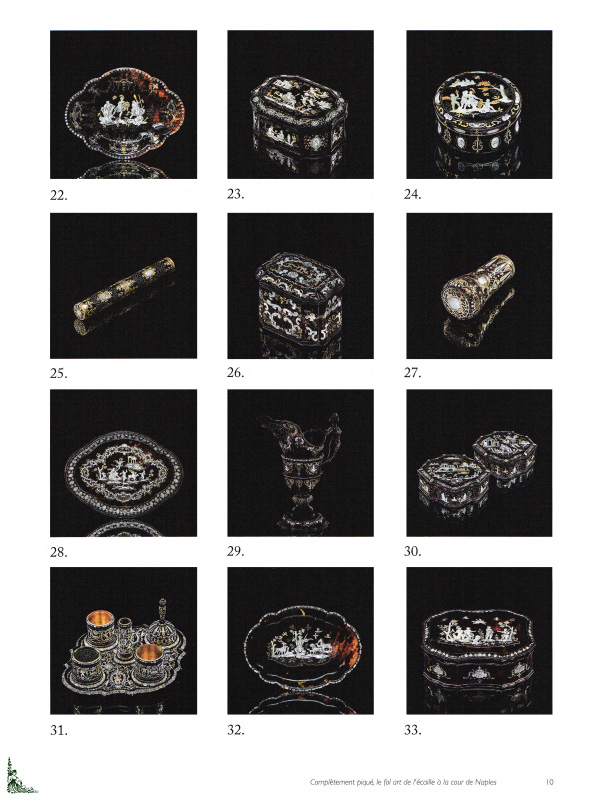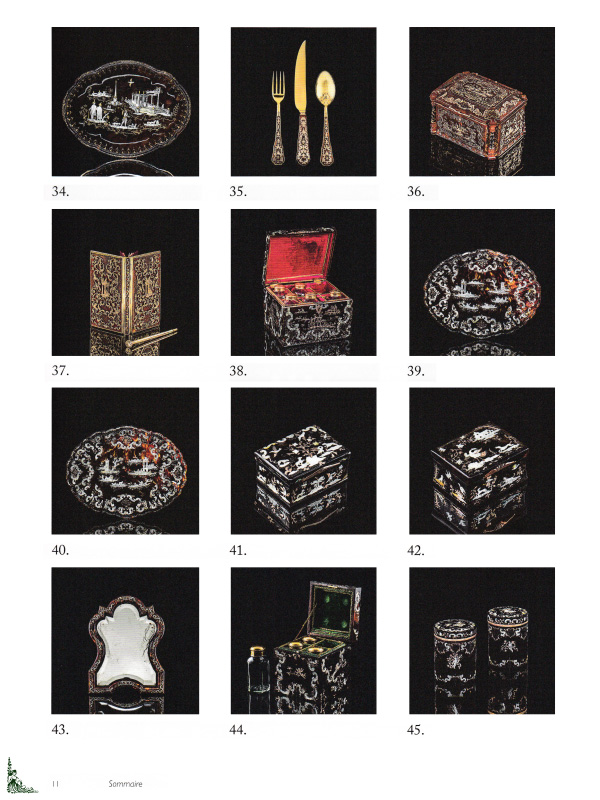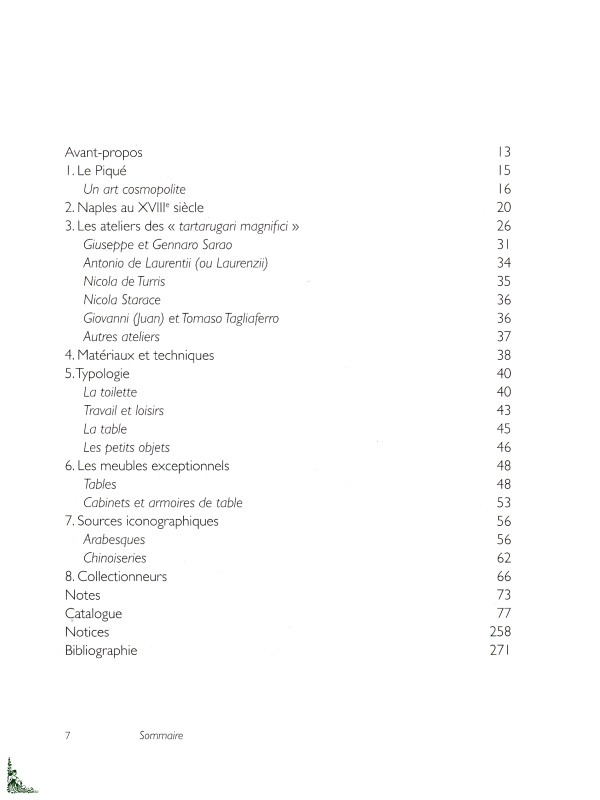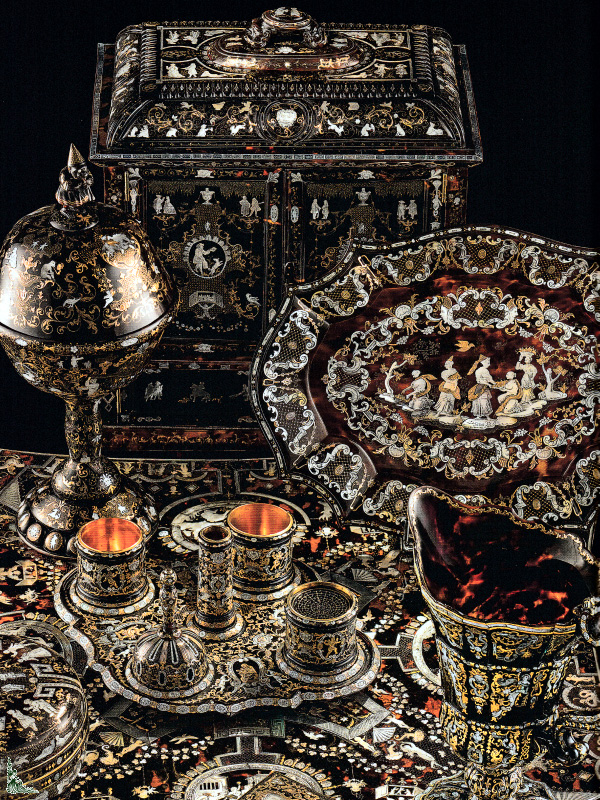Complètement piqué, gold, tortoiseshell and mother-of-pearl at the court of Naples
この本の詳細
| 著者 : | Alexis Kugel |
| 出版業者 : | Monelle-Hayot (2018) |
| 不良部分 : | Hardcover w/jacket (272 full color pages) 8 inches x 12 inches |
| 言語 : | French |
| ISBN : | 979-10-96561-12-4 |
| EAN : | 9791096561124 |
記述
Complètement piqué, gold, tortoiseshell and mother-of-pearl at the court of Naples, by A. Kugel, Ed. Monelle-Hayot, 8 inches x 12 inches ( 21 cm x 30 cm ), hardcover book with 272 full color pages
This book of 272 pages with great color illustrations presents the art of "piqué developed in Naples in the first half of the eighteenth century, a technique that combines an extravagant inventiveness, virtuoso skill and unheard of luxury.
These extraordinary objects bring together three precious materials: shell, gold and mother-of-pearl.
According to Nicolas Kugel: "This fascinating combination is sublimated by the light that makes gold sparkle, reveals the iridescence of mother-of-pearl and penetrates the dark diaphaneness of the shell."
These works were made between 1720 and 1760 for amateurs and the Court, especially for Charles de Bourbon, king of Naples in 1734, who transformed his kingdom into one of the most resplendent and cosmopolitan courts of Europe. This book presents more than fifty objects, gathered around the masterpiece of this technique, the Sarao's table.
The authors of these wonders were called "Tartarugari". The most famous of these was Giuseppe Sarao, whose studio leaned against the walls of the Royal Palace and signed some of the exhibits in the exhibition. These artists of genius not only managed to weld and mold the shell with boiling water and olive oil, but also to inlay the gold and mother-of-pearl in the shell still tender.
They created the most extravagant forms on which they deployed, thanks to the art of "piqué", fashionable sets: antics, chinoiseries or grotesques.
Contents:
- Foreword
- 1. The "Piqué", a cosmopolitan art
- 2. Naples in the 18th century
- 3. The workshops of "tartarugari magnifici"
- Guseppe and Genaro Sarao
- Antonio de Laurenti (or Laurenzi)
- Nicolas de Turris
- Nicolas Starace
- Giovani ( Juan ) and Tomaso Tagliaferro
- Other workshops
- 4. Materials and techniques
- 5. Typology
- The toilet
- Work and leisure
- The table
- Small objects
- 6. Exceptional furniture
- Tables
- Cabinets and table cupboards
- 7. Iconographic sources
- 8. Collectors
- Notes
- Catalogue
- Records
- Bibliography
The French texts are written by Alexis Kugel.
 Description française
Description française
Complètement piqué, le fol art de l'écaille à la cour de Naples
Détails du livre
| Auteur : | Alexis Kugel |
| Éditeur : | Monelle-Hayot (2018) |
| Reliure : | Relié sous jaquette (272 pages couleurs) 21 cm x 30 cm ( 8 inches x 12 inches ) |
| Langue(s) : | Français |
| ISBN : | 979-10-96561-12-4 |
| EAN : | 9791096561124 |
Description
Complètement piqué, le fol art de l'écaille à la cour de Naples, de A. Kugel, Ed. Monelle-Hayot, 21 cm x 30 cm, relié avec 272 pages couleurs
Ce livre de 272 pages couleurs superbement illustré présente l'Art du « piqué », développé à Naples dans la première moitié du XVIIIe siècle, une technique qui conjugue une extravagante inventivité, une virtuose habileté et un luxe inouï.
Ces objets extraordinaires rassemblent trois matériaux précieux : l'écaille, l'or et la nacre.
Selon Nicolas Kugel : « Cette fascinante combinaison est sublimée par la lumière qui fait étinceler l'or, révèle l'iridescence de la nacre et pénètre la sombre diaphanéité de l'écaille. »
Ces oeuvres furent réalisées entre 1720 et 1760 pour les amateurs et la Cour, en particulier pour Charles de Bourbon, roi de Naples en 1734, qui transforma son royaume en l'une des Cours d'Europe les plus resplendissantes et cosmopolites. Cet ouvrage présente plus de cinquante objets, réunis autour du chef-d'oeuvre de cette technique la table de Sarao.
Les auteurs de ces merveilles étaient appelés « Tartarugari ». Le plus fameux d'entre eux fut Giuseppe Sarao, dont l'atelier s'adossait aux murs du palais royal et qui a signé certaines pièces présentées dans l'exposition. Ces artistes de génie parvinrent non seulement à souder et mouler l'écaille à l'aide d'eau bouillante et d'huile d'olive, mais encore à y incruster l'or et la nacre dans l'écaille encore attendrie.
Ils créèrent les formes les plus extravagantes sur lesquelles ils déployèrent, grâce à l'art du « piqué », les décors à la mode : singeries, chinoiseries ou grotesques.
Principaux chapitres de l'ouvrage :
- Avant-propos
- 1. Le Piqué, un art cosmopolite
- 2. Naples au XVIIIe siècle
- 3. Les ateliers des "tartarugari magnifici"
- Guseppe et Genaro Sarao
- Antonio de Laurenti ( ou Laurenzi )
- Nicolas de Turris
- Nicolas Starace
- Giovani ( Juan ) et Tomaso Tagliaferro
- Autres ateliers
- 4. Matériaux et techniques
- 5. Typologie
- La toilette
- Travail et loisirs
- La table
- Les petits objets
- 6. Les meubles exceptionnels
- Tables
- Cabinets et armoires de table
- 7. Sources iconographiques
- 8. Collectionneurs
- Notes
- Catalogue
- Notices
- Bibliographie
Les textes en Français sont de Alexis Kugel.


